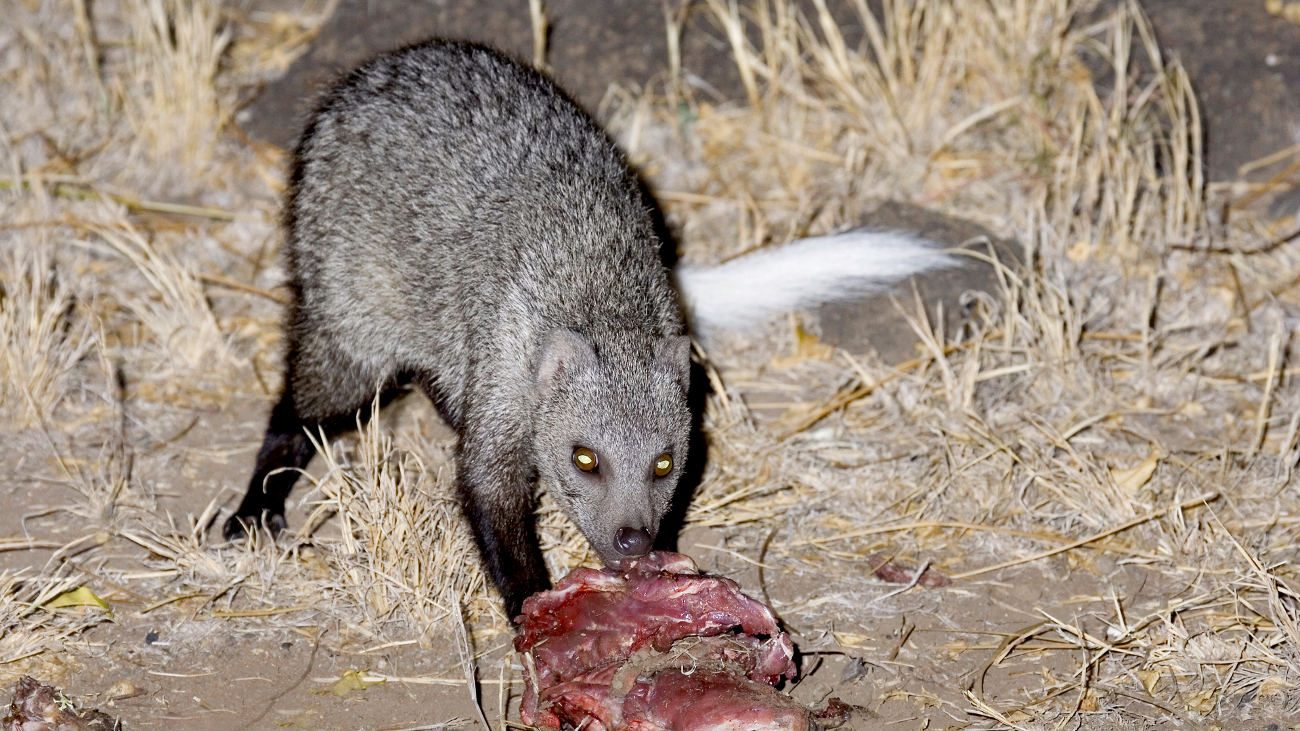- Home
- Conservancy
- White tailed mongoose
WHERE TO SEE White tailed mongoose
Description
The white-tailed mongoose (Ichneumia albicauda) is the largest species in the mongoose family (Herpestidae). It lives in most of Africa south of the Sahara, and the southern portion of the Arabian Peninsula. They live in a wide range of habitats, from semi-desert to savanna woodland, but avoid moist areas like the Congo River basin or extremely arid areas. They prefer areas of thick cover, such as the edges of forests and brushy streams.
Physical appearance
The white-tailed mongoose attains a weight range of 6.4-9.2 lb (2.9-4.2 kg), has a head-and-body length of 21-28 in (53–71 cm) and a tail length of 16-19 in (40–47 cm). legs are relatively long for a mongoose. The head is very long and narrow and tapers to a point. Its large, rounded ears are set low on the sides of the head. It has a yellow to tan coloration on its body, with long black guard hairs, giving it an overall grizzled grey appearance. The legs and arms are black from the elbow/knee down. The base of the large, bushy tail is brownish yellow, and is white on the latter half. The tail may make up to 40% of the body length and tapers to a point. They lack hair on their upper lip and their hands from the palms to the wrists. Females have four teats
Fun Facts
Ichneumia albicauda is primarily nocturnal and terrestrial. By day they will rest in an abandoned burrow, termite, mound, or in cavities under tree roots. The average home range is 0.97 km² for males and 0.64 km² for females. Ranges of males do not overlap, but ranges of opposite sexes overlap significantly. Females either live alone with their own offspring or in a small group with other females and their offspring, although they do not associate with each other. Though they may share a range, they forage separately. They are, for the most part, solitary creatures, with the male and female only coming together to mate. Reports of groups are either a breeding pair or a mother and her offspring. These mongooses do not migrate except to establish their own territory away from their mother's range.
These mongooses are very vocal, and make an unusual barking sound that is associated with sexual behavior. If frightened, they will secrete a noxious substance from their anal glands. They do not stand on their hind feet for any length of time like other mongooses
